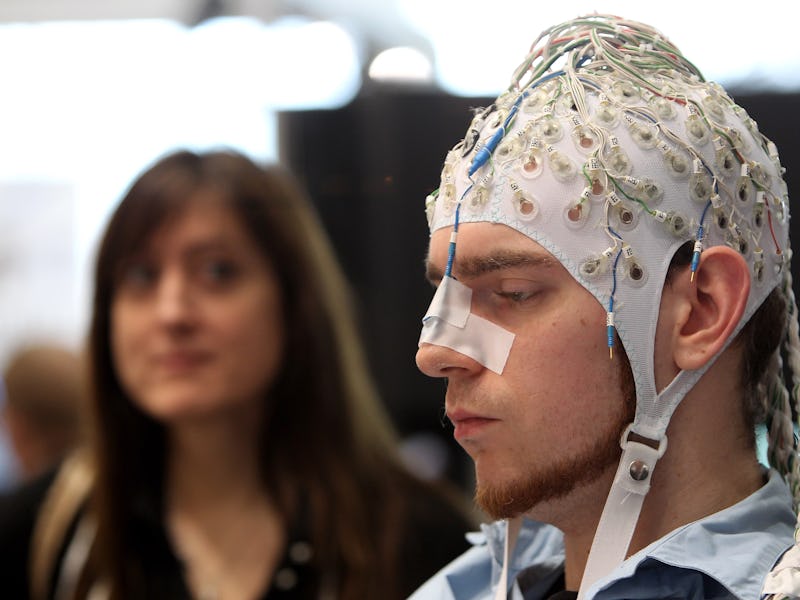The Answer to Thought-to-Text Technology? Zebra Finches
Your smartphone may be able to read your mind sooner than you think.

We may be one step closer in developing a way to put your thoughts into text — and it’s all thanks to zebra finches, the bird most commonly found in central Australia.
Scientists out of the University of California, San Diego created a brain-machine interface that could predict a zebra finch’s song a fraction of a second before the bird sang it, according to a paper published in September.
The interface works by decoding “a complex, learned vocal behavior directly from neural activity,” the researchers said. The birdsong, they write, is potentially a good prototype for recognizing human neural activity and predicting the similarly complex communication signals before people speak or write. Here’s how they explain the connection in their paper:
First, birdsong is temporally structured (like human speech); this temporal patterning can be built into a decoder using a recurrent neural network. Second, the biomechanics of birdsong production are well understood; this enables us to employ a biophysical model of the vocal organ that captures most of the complexity of the song and reduces it to a lower dimensional parameter space. By combining these techniques, we decode realistic synthetic birdsong directly from neural activity.
Yeah, the research uses a lot of technical jargon about neural activity and memory. But essentially, scientists used the interface to read the zebra finches’ mind without them “talking.” They did this by decoding the birds’ brain signals and translating them into song. The connection between birds’ brain activity and communication mimics those found in humans, scientists say. And if a machine can read a bird’s brain to predict what its song will sound like, then those interfaces could use the same process to unlock human speech patterns and translate them into words without anything spoken out loud.
Shoutout to the zebra finch, you the real MVP.
While technologies that could perform these tasks for humans do not yet exist, they are in development as we speak. Two of the biggest players in the future of tech — Mark Zuckerberg and Elon Musk — announced in April they were working on brain-machine interfaces. Zuckerberg’s Facebook delegated its covert Building 8 group to create a system that would let humans communicate through skin, while Musk’s recently launch startup Neuralink has been oddly quiet about its progress on a brain implant that would help those with brain injuries and impaired motor function.
With this latest research, Musk and Zuckerberg’s developing technologies may have found an answer they desperately needed. And if that’s the case, you might soon be able to text safely on the go without touching your smartphone.
If you liked this article, check out this video about a breakthrough brainwave-reading device.